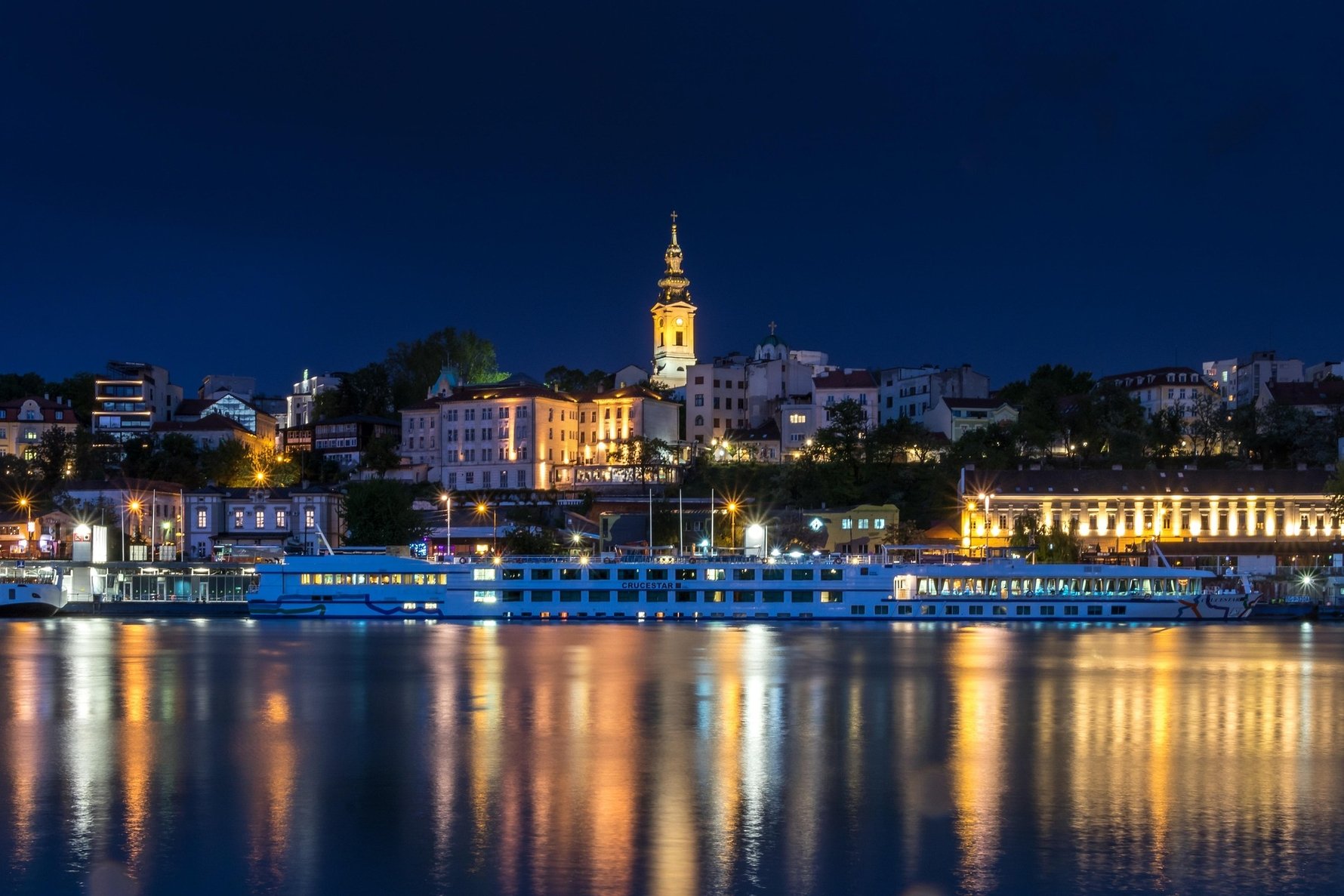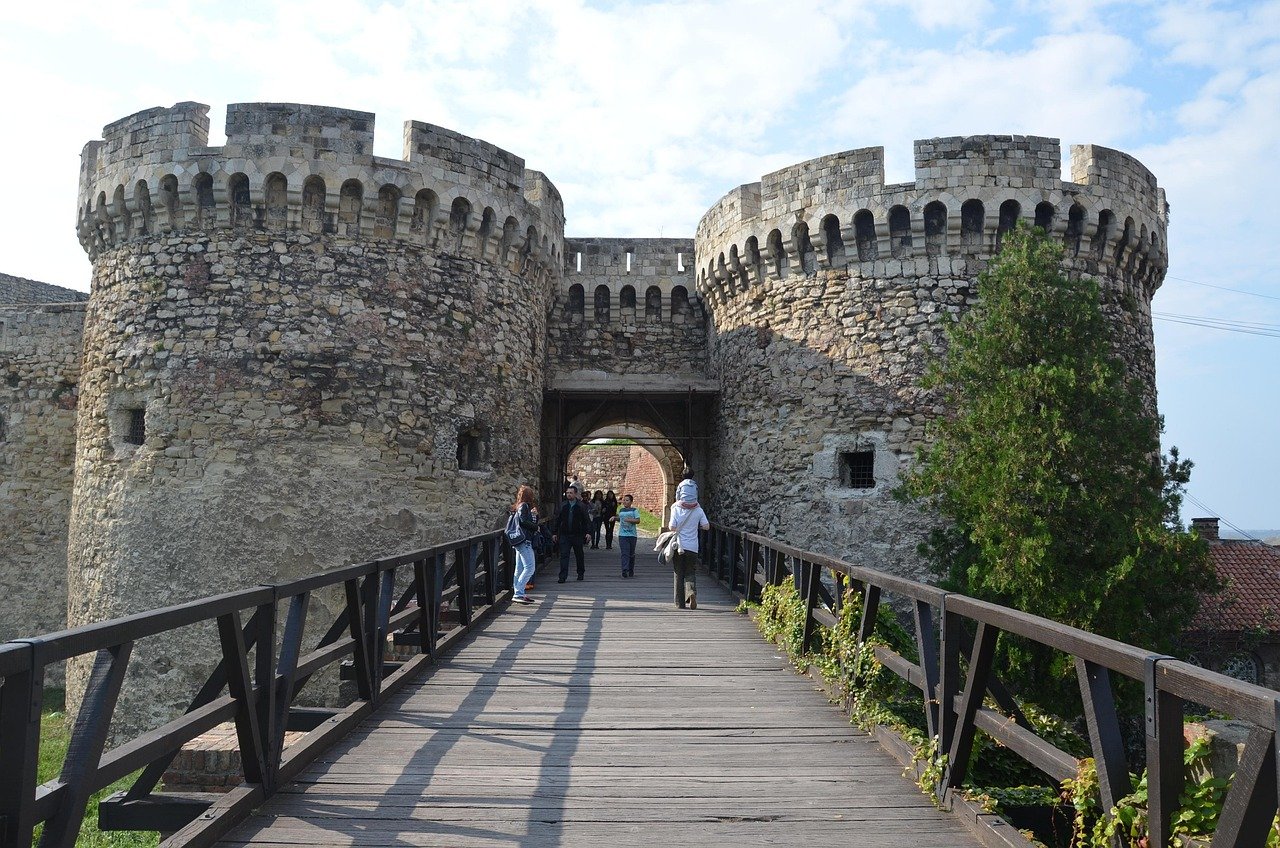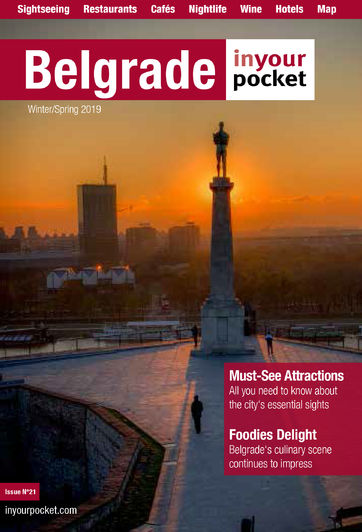
Zagreb and Ljubljana
The circuit begins in Zagreb, which has direct trains into Slovenia. The ride to Ljubljana takes only about two and a half hours, making it easy to fit both capitals into the first stretch. Ljubljana keeps things compact, with the Triple Bridge, Tivoli Park, and Plečnik’s riverside colonnades all close together, while the castle on the hill offers views across the city.The train back to Zagreb then sets up the eastward journey. Zagreb itself is larger and spreads out around Ban Jelačić Square, the Cathedral, and the Upper Town with its medieval church and narrow lanes. The Museum of Broken Relationships adds something modern and quirky. Linking these two cities early gives the trip a Central European flavour before the route bends further into the Balkans.
Belgrade to Bar with Expanded Exploration
From Zagreb, the train heads east to Belgrade across wide plains, and once there the Serbian capital reveals plenty to see. Kalemegdan Fortress overlooks the confluence of the Sava and Danube, while Knez Mihailova Street and Skadarlija provide lively walking areas. The Church of Saint Sava towers above the city with its huge dome. Then comes the famous Belgrade to Bar train, which runs for about eleven hours through gorges, mountains, and long tunnels before reaching the Adriatic.Internet access in some compartments changes how the journey feels, because it allows people to stay connected even while crossing remote mountain stretches. Dutch travellers in particular make use of this time online, since they often see travel as a chance to broaden what they explore. Some turn to casino guides during these hours, as reviews covering no Cruks casino platforms appeal thanks to their high bonuses, fast registration without verification, and flexible payment methods. This activity fits into the journey since the long ride provides hours to combine sightseeing with digital discovery.
After the train completes its dramatic route across the mountains, the Adriatic coast comes into view and the city of Bar becomes the next focus. Once in Bar, travellers can see its ruined fortress and narrow lanes, which reveal the deep history of the region. The King Nikola Palace highlights the royal legacy of Montenegro’s past. Along the Adriatic, the coastal promenade creates a lively atmosphere with cafés, markets, and sea views.

Montenegro to Sarajevo
From Bar or Podgorica, the path north continues by bus through mountain passes that cut into Bosnia. The scenery shifts quickly, and after crossing valleys and ridges, Sarajevo opens up in its river basin. The city has Baščaršija, the old Ottoman bazaar, filled with narrow streets, mosques, and old inns that now serve coffee. The Latin Bridge stands nearby, remembered for its link to the start of the First World War.Austro-Hungarian architecture lines Ferhadija Street, where 19th-century façades mix with modern shops. Sarajevo also has museums and cultural centres that document its more recent past. Coming from Montenegro, the contrast is striking, as the journey shifts from Adriatic mountains to a valley city layered with history.
Sarajevo to Ploče and Dubrovnik
From Sarajevo, the rail line heads south through the Neretva Valley to Čapljina, and all the way to Ploče, Croatia. The train follows the river between cliffs and vineyards, making the journey as memorable as the destination. Ploče itself serves mainly as a port town, but its real value for a traveller is the connection to Dubrovnik, just an hour south by road. Dubrovnik’s Old Town is a highlight of the Adriatic, with fortified walls, the Stradun main street, and Lovrijenac Fortress watching from the cliffs.Walking the walls shows how complete the defences remain, and the mix of palaces and churches inside the city adds to the sense of scale. This part of the trip blends Bosnia’s inland heritage with Croatia’s coastal centrepiece, giving the week a balance between valleys and the sea.
Closing the Loop in Zagreb
From Ploče or Dubrovnik, it is straightforward to return north towards Zagreb, either by bus, train connections further inland, or flights from the coast. Back in Zagreb, the journey circles neatly, since the Croatian capital anchors the trip both at the start and the end. Its museums, grand squares, and Upper Town work as the final stage where the impressions of the week settle in.The loop shows how transitional play works in travel, because the value lies not only in what is seen but also in how each move connects to the next. The trip remains practical within seven days since trains and buses cover the long stretches while each city contributes its own must-see places. Together, they shape a route that presents the Balkans as both accessible and varied without wasted effort.





Comments